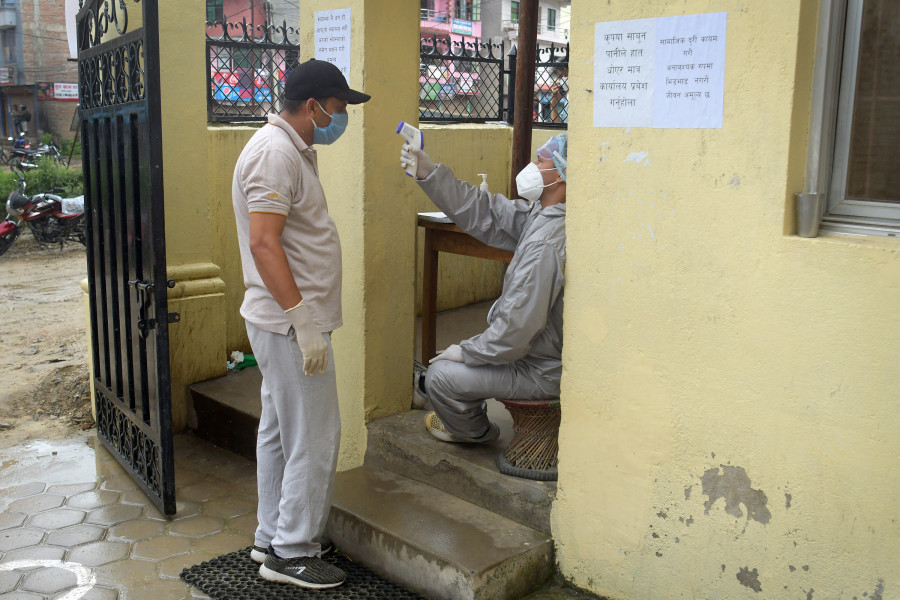Money
Revenue collection picks up pace as taxpayers volunteer to pay to state coffers
As per a Supreme Court order, tax authority should give taxpayers at least 30 days from the day of complete lifting of the lockdown to pay their dues.
Prithvi Man Shrestha
Two weeks after painting a bleak picture of the national treasury, Finance Minister Yubaraj Khatiwada on June 29 appeared confident about revenue collection.
“Collection of both customs and internal revenues is around 80 percent of the normal,” he said during a webinar organised by the Confederation of Nepalese Industries (CNI), a grouping of medium and large-scale industries.
One of the reasons behind Khatiwada’s optimistic tone regarding revenue is a relatively modest amount of taxes paid by people voluntarily.
Taxpayers are not required to pay taxes immediately as per the Supreme Court order of June 11, which gives them at least 30 days after the lockdown is fully withdrawn to clear their dues.
The government on June 29 extended the lockdown enforced to curb the spread of the Covid-19 contagion till July 21 in its current relaxed form. The country has been under lockdown since March 24 but the government on June 10 relaxed it to allow a majority of economic activities.
“In the first three weeks of the Asar month [mid-June to mid-July], we have collected over Rs 34 billion in voluntary tax payments,” said Mukti Prasad Pandey, deputy director general of the Inland Revenue Department. “The revenue is being collected under all key headings—income tax, value added tax and excise duty.”
The government has given a Rs80 billion target in Asar to the Inland Revenue Department, which is responsible for collecting internal revenue.
After the court’s order, the government reached out to the private sector to encourage them to submit taxes voluntarily, citing the difficulty in running the government without tax payments. The private sector has also responded positively to the government’s call.
“The tax collection reported by the tax authority is encouraging,” said Shekhar Golchha, senior vice-president of the Federation of Nepalese Chambers of Commerce and Industry.
“Following the court order, the private sector was not required to pay the tax right now but they are paying, which suggests that the private sector has shown its responsibility and morality.”
Yagya Dhungel, chief of the revenue division at the Finance Ministry, said the government was satisfied with the collection of taxes despite the Supreme Court order.
This optimistic outlook on revenue is completely opposite to what Minister Khatiwada told the House of Representatives on June 14.
“The situation of revenue is not good, which is the reality. There is no situation of the daily revenue collection sustaining the government’s daily expenditures,” he had said in response to lawmakers’ questions on the financial bill at the House.
Salary for public servants, pensions for retired employees, social security allowance for the elderly and disadvantaged groups, and payments to be made for internal and external loans are among the government’s compulsory liabilities.
Officials now say that the government is not facing difficulties paying at least public officials. As of Friday, the government’s treasury is positive by around Rs7 billion, according to the Financial Comptroller General Office, which keeps the record of the government’s incomes and expenditures.
“Based on the current revenue collection, there won’t be difficulty at least to pay the salary of government staff,” said Deputy Financial Comptroller General Bhesh Prasad Bhurtel. Besides internal revenue, the government collects significant amounts in tariffs on imported goods.
According to Dhugel, the government has been collecting Rs700 to 750 million on an average day from the customs although daily revenue collection is around Rs1 billion in normal times.
Bhurtel said the government still has some options left if available resources turn out to be insufficient to bridge the resources gap to meet the government’s basic liabilities.
The government has yet to fully raise internal loans as planned in the current fiscal year. “There is a scope of raising internal loans if the existing resources are not enough,” said Bhurtel.
The government has so far raised Rs175 billion in internal loans against the target of Rs195 billion. “The government can also take overdrafts from the central bank,” said Bhurtel.
On the other hand, the government has started bringing in resources under various funds created for specific purposes. “We have so far identified over 65 funds where there is money saved after completion of a certain programme and amounts that remain surplus due to the depreciation of domestic currency against the US dollar,” said Bhurtel.
“We have collected around Rs500 million so far from these funds and there is more than Rs2 billion in such funds,” said Bhurtel. “If we also take into account other funds such as those created for the welfare of migrant workers and rural telecommunication development, there will be a huge amount to be brought under the government’s treasury.”




 7.12°C Kathmandu
7.12°C Kathmandu














